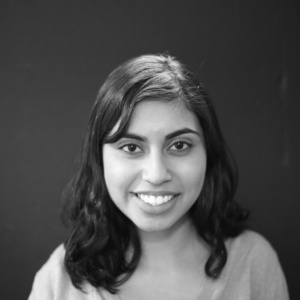It’s time for students to ask why they identify with certain politics
Sarah Allam | Head Illustrator
The infamous College Democrats email chain fiasco last month captured the attention of the entire Syracuse University campus, and while many of us laughed about it, the controversial listserv exchange highlighted the divisiveness of modern politics.
There were references to mental illness and “defending” conservative values. The script of the Bee movie was thrown into the mix. But what we can learn from this debacle — besides the power of the “reply all” button — is how intensely college students judge one another based on political beliefs. It’s like people would rather speak out against someone than speak out for something.
Although already polarized, politics feel even more so on college campuses, which are often skewed more to the left. In fact, a March study conducted by the Pew Research Center shows that, compared to older generations, “millennials continue to have a distinct — and increasingly liberal — outlook.”
Kristi Andersen, a professor emeritus of political science in the Maxwell School of Citizenship and Public Affairs, said there was a much larger variety of political opinions when she first started teaching in the 1980s. Back then, there were a “hefty amount of people on all sides of politics,” Anderson said.
“Syracuse students have become more uniformly liberal and Democratic,” she said.
In a campaign politics class taught by one of Andersen’s colleagues, during election years, the professor created a campaign simulation in the class. Students were picked to play various roles: campaign managers, consultants, political candidates and news reporters. At first, the Republicans and Democrats in class could play their respective party’s candidates and consultants, but over time, it became more difficult to choose people. Instead of students naturally dividing themselves, the professor started having to assign parties.
Today, class discussions often lack the conservative perspective. When it is discussed, it’s not given nearly as much weight. But this isn’t necessarily the university’s fault –– institutions like SU are often criticized for being too liberal or for indoctrinating students with leftist ideas, while in reality, it’s the students who fuel the thoughts and ideas that shape the campus atmosphere.
The Pew Research Center study attributed some of the younger generations’ more liberal outlooks to greater racial and ethnic diversity. More than 40 percent of millennials are nonwhite, which is the “highest share of any adult generation.”
The amount of liberalism in SU courses depends on the student’s background. If you’re from a liberal family, this campus might help reinforce your notions. But if you’re from a conservative one, it could challenge some deep-rooted beliefs.
Andersen said has been the case in other periods of United States history. For her generation, she noticed younger people were more likely to oppose the Vietnam War, as well as were more likely to support the civil rights movement and the women’s movement.
For students at SU, this trend could mean people are just following the crowd, or are more likely to vocalize beliefs that are socially accepted. On the other hand, the wide political gap between younger and older generations could also be a positive sign — a sign that students and young adults are forming their own political opinions, rather than just following family loyalties.
Either way, college shouldn’t just be about forming political opinions, but also figuring out where those opinions stem from. Students should ask themselves “why,” just as much as “what” they believe in.
Rashika Jaipuriar is a junior broadcast and digital journalism and civic engagement dual major. Her column appears biweekly. She can be reached at rjaipuri@syr.edu and followed on Twitter @rashikajpr.
Published on April 24, 2018 at 9:23 pm






